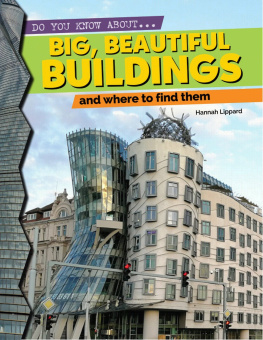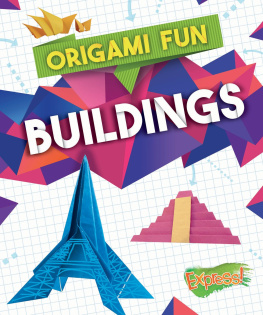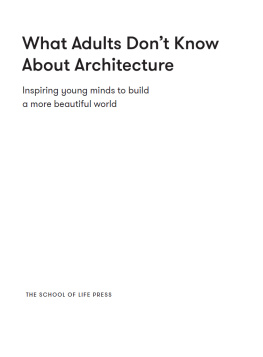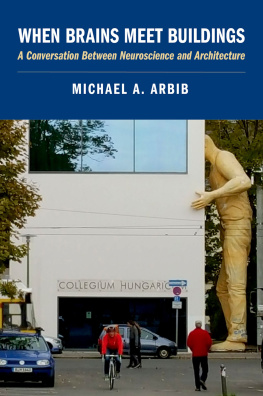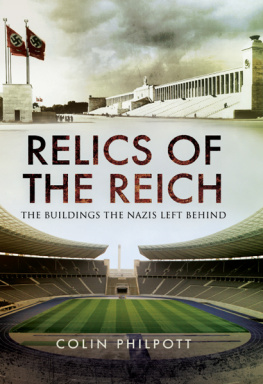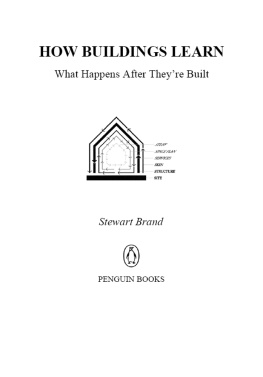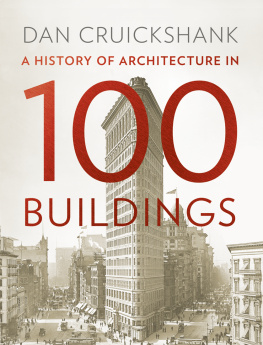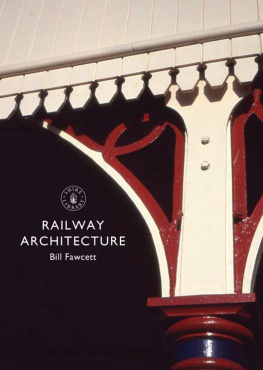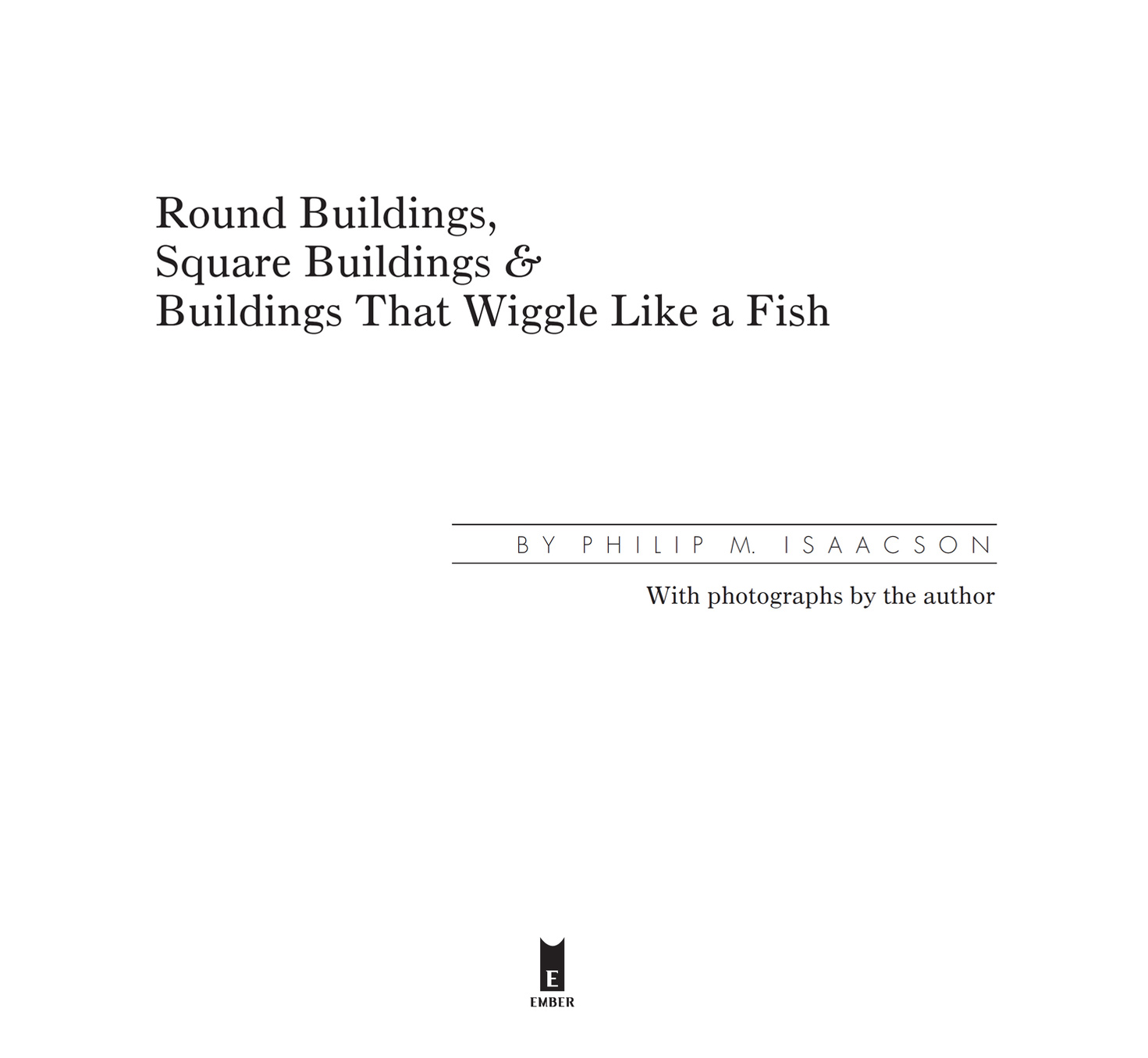Contents
Also by PHILIP M. ISAACSON
A Short Walk Around the Pyramids & Through the World of Art
Copyright 1988 by Philip M. Isaacson
All rights reserved. Published in the United States by Ember, an imprint of Random House Childrens Books, a division of Penguin Random House LLC, New York. Originally published in hardcover in the United States by Alfred A. Knopf, an imprint of Random House Childrens Books, New York, in 1988.
Ember and the E colophon are registered trademarks of Penguin Random House LLC.
Visit us on the Web! randomhouseteens.com
Educators and librarians, for a variety of teaching tools, visit us at RHTeachersLibrarians.com
The Library of Congress has cataloged the hardcover edition of this work as follows:
Isaacson, Philip M., 19242013
Round buildings, square buildings, and buildings that wiggle like a fish.
Summary: Explores various architectural styles around the world depicting churches, fortresses, bridges, air terminals, mills, cliff dwellings, tombs, and lighthouses of particular note.
1. ArchitectureJuvenile literature. [1. Architecture.] I. Title.
NA2555.I83 1988 720 87-16967
Trade ISBN9780394893822
eBook ISBN9781101933213
Random House Childrens Books supports the First Amendment and celebrates the right to read.
Frontispiece / The granite wall with the round corners is almost all that remains of the Stock Exchange Building at 53 State Street in Boston. The Exchange was built between 1889 and 1891 from designs of Peabody and Stearns. When the glass tower behind it was added from 1981 to 1984, most of the original building was torn down. The tower was designed by WZMH Group. The building, with its new tower, has been renamed Exchange Place.
Tailpiece / The Centre National dArt et de Culture Georges-Pompidou in Paris opened in 1977. It is an art museum, a place to perform music, a library, and an archive of industrial design. It was designed by two architects, Richard Rogers of England and Renzo Piano of Italy. The Pompidou Center is a glass box six stories high and much longer than a football field. You can hardly see the glass from the outside, however, because the building is covered by a forest of pipes, ducts, and permanent scaffolding. Those tubes, which carry the heating, cooling, and ventilating and electrical systems of the Pompidou Center, have turned it into the largest Erector Set in the world.
v4.1
a
For Andrew, Sarah, Julia, Jacob, and for Miranda
P.M.I.
Contents
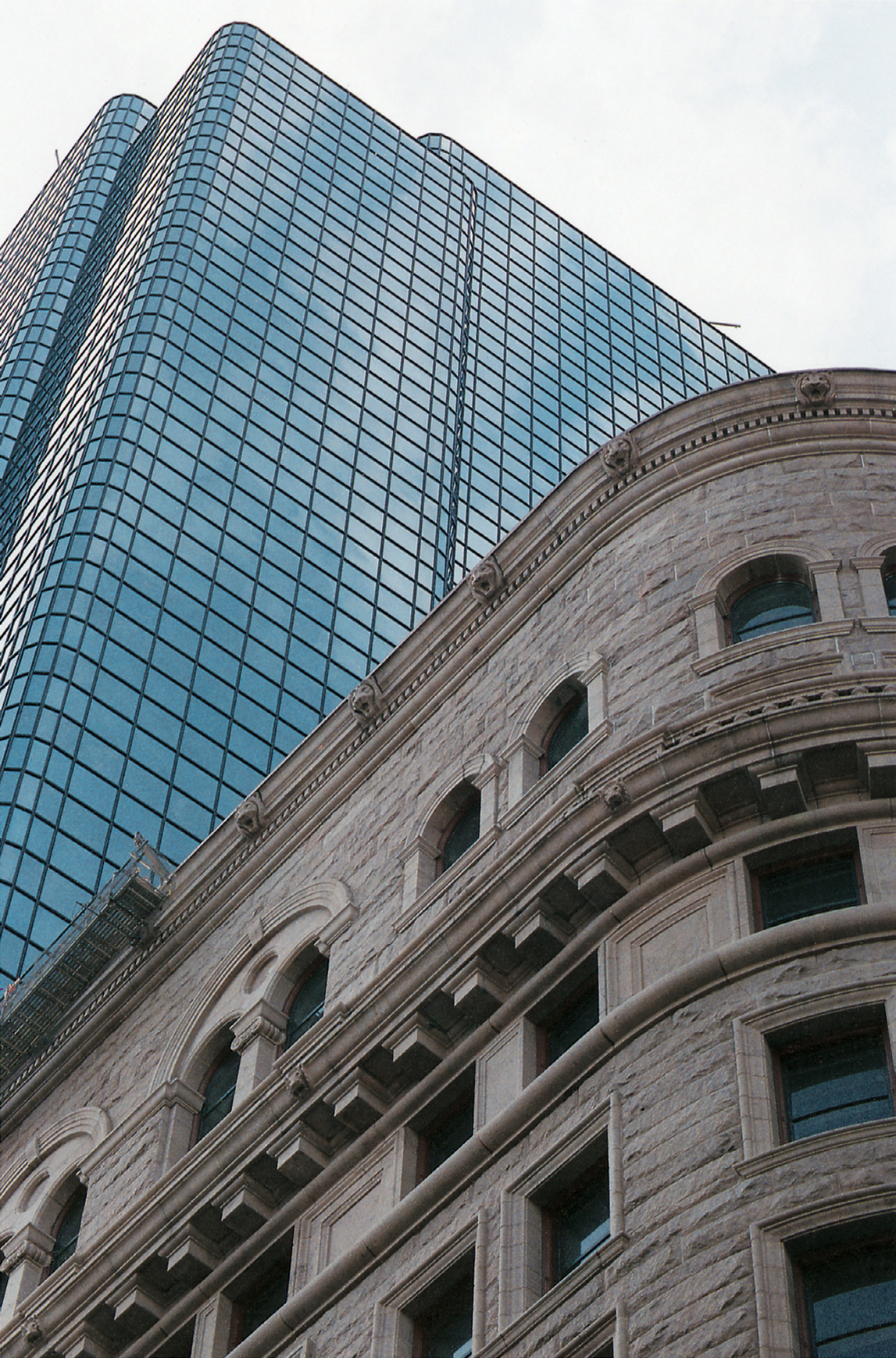
CHAPTER ONE
Three Wondrous Buildings
This is a building in a small city in northern India (1).

(
People come from all over the world to see it. Many of them come because they feel that it is the most beautiful building in the world. It is called the Taj Mahal and it is a valentine from a great emperor to a wife who died when she was very young. It is made of marble the color of cream. Each afternoon the sun changes the color of the Taj Mahal. First it turns it pink, then yellow, then the color of apricots. In the evening it becomes brown, and when the moon shines on it, it is blue and gray (2).

(
In the moonlight it becomes the old emperor, asleep and dreaming.
The Taj Mahal is about three hundred years old. This building is much older (3, ).
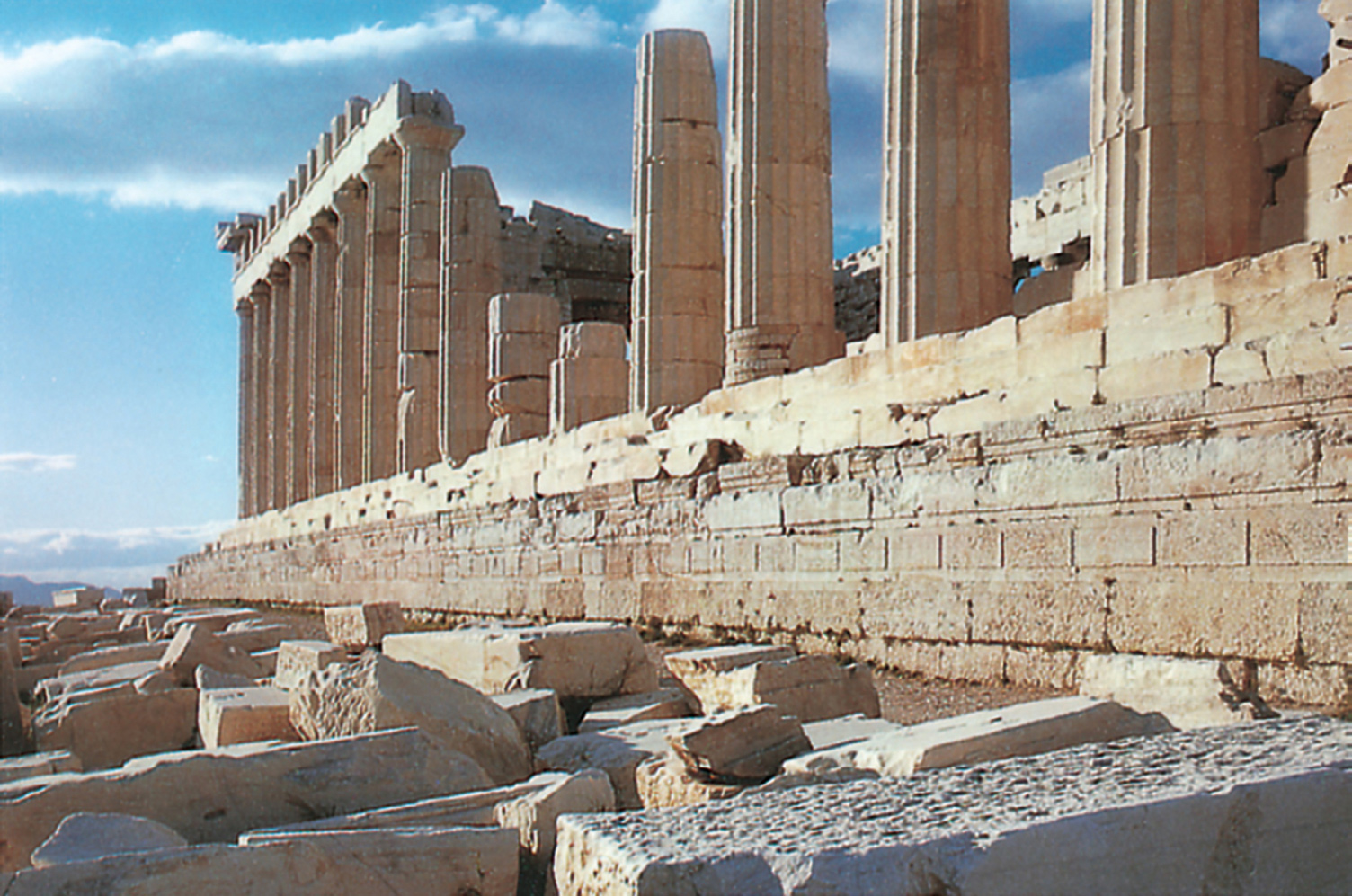
(
It was built about 2,500 years ago and stands on a white marble hill in Greece. Because it too is made of white marble, it seems to grow out of that hill as though it were a group of great trees standing in a small forest. It is called the Parthenon in honor of an ancient Greek goddess. Though it is made only of marble postscalled columnsand a very simple roof, it is just as famous as the Taj Mahal and has just as many admirers. Many people feel that it is the most beautiful building in the world.

(
This building is also very famous (4). It is in a French city near Paris called Chartres. Its name is Our Lady of Chartres. One part of it is almost nine hundred years old and so it is older than the Taj Mahal but not nearly as old as the Parthenon. It is made of a hard stone that is not very friendly and has many moods. On a sunny day, with fast-moving clouds behind it, Chartres looks like a great ship sailing along against the sky, but on a dark day it can be cold and gray and a little frightening. Chartres is another building that many people feel is the most beautiful of all.
In many ways these buildings are alike. All of them are places of worship: the Taj Mahal is a mosque, the Parthenon is a temple, Chartres is a church. Each was built in honor of a woman; the Taj Mahal honors a young wife, the Parthenon honors a young goddess, Chartres honors a saint. Finally, all three are very beautiful.
In other ways, however, theyre not alike at all. The Taj Mahal sits in a riverside garden with pools of water to reflect its soft shapes. The Parthenon is short and as powerful as a king on a mountain throne. Chartres is hard and sharp with towers tall enough to slice open the skytowers so tall that you can see them from afar, long before you see the great cathedral beneath them.
These wonderful buildings tell us many things about beauty. First they tell us that there are many kinds of beauty. There is beauty in buildings that look soft and creamy, in buildings that look short and strong, and in buildings that are sharp and tall. They also tell us that all beautiful buildings, indeed all beautiful things, have a magical feeling about them. That feeling is called harmony. A building has harmony when everything about itits shape, its walls, its windows and doorsseems just right. Each must be a perfect companion for the other. When each suits the other so well that they come to belong to one another, the building is a work of art. The person who plans such a buildingwho designs itis an artist, sometimes a very great artist.
Were going to look at many beautiful buildings to help us understand more about harmony. Youve heard of some of the buildings. You may even have seen, or someday will see, some of them. Others are not famous at all and you may never see them. But famous or not, all of them share in the same magic, the magic of harmony.


